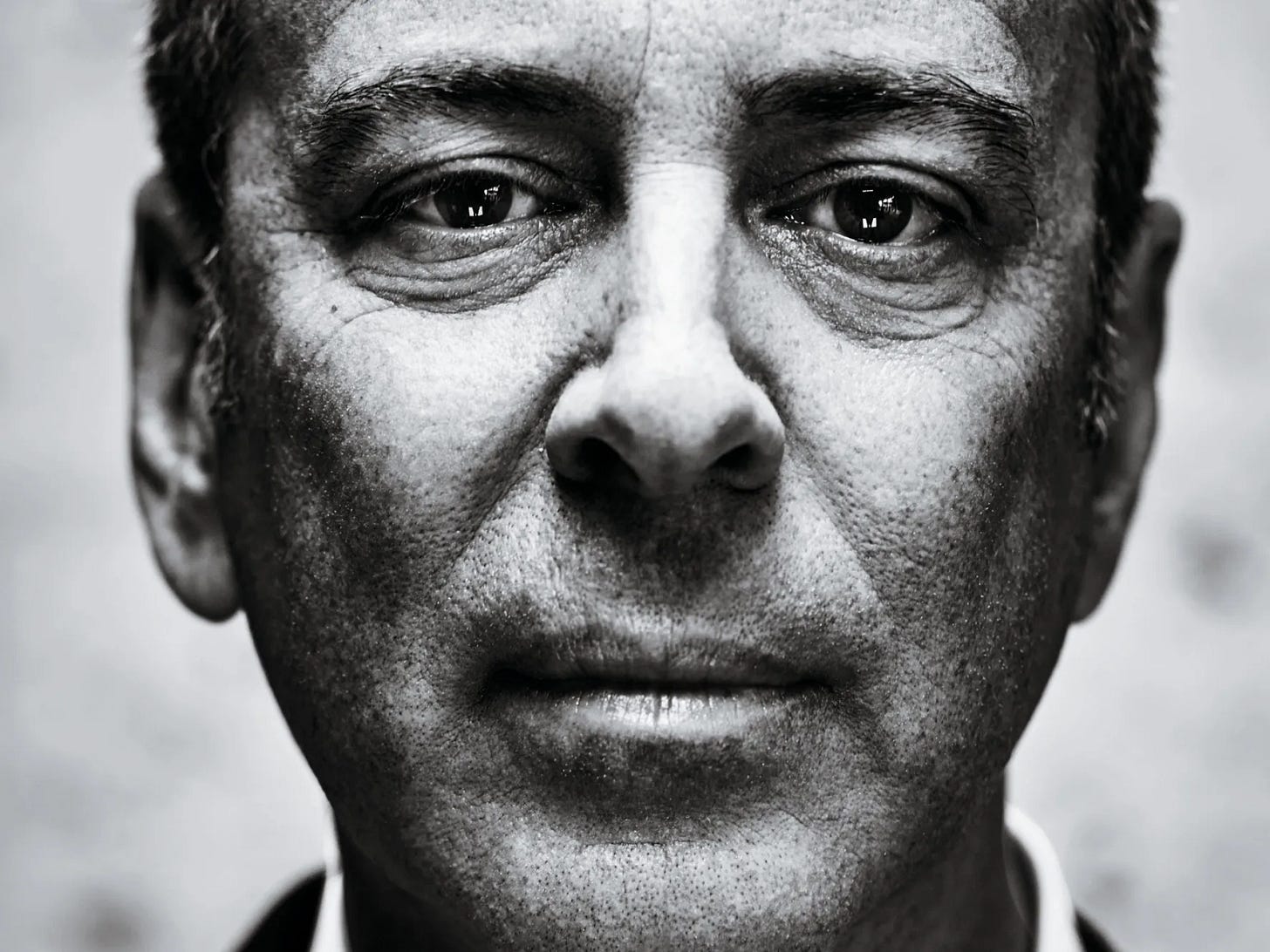Most know Edward Lampert as the former CEO and chairman of Sears. Less is known about the path that brought him there. Edward’s path is one of the most interesting ones I have come across during my research.
Corporate job, Hedge fund manager, Billionaire yacht owner, CEO of a retail giant… This is the story about the man that did it all.
The Early days
Lampert's upbringing and early experiences shaped his path towards success in the trading world.
Born in 1962 to Dolores Lampert and Floyd M. Lampert, Lampert comes from a Jewish background. His father, a prominent partner in a law firm, and his grandmother, a passive investor and avid follower of Wall Street Week, influenced his interest in investing from an early age. As a child, Lampert would eagerly review and assess his grandmother's stock picks in the daily newspaper.
Tragedy struck when Lampert's father passed away in 1977, leaving his mother, Dolores, to support the family. Determined to step up and face the new challenges, Lampert took on responsibilities beyond his years. His mother commended his maturity:
"Eddie really assumed the responsibility, knowing that life had changed and we had to accomplish something by ourselves now."
To help provide for his family, Lampert took on part-time jobs at various warehouses, juggling his studies and work commitments. Remarkably, he managed to excel academically, participating in soccer and basketball, and even earning the scholar athlete award at his high school. Lampert's dedication earned him financial aid that facilitated his college education.
In 1984, Lampert graduated with a bachelor's degree in economics, achieving the highest honors of summa cum laude from Yale University. During his time at Yale, he was a member of prestigious societies like Skull and Bones and Phi Beta Kappa. These formative years laid the foundation for Lampert's future achievements in trading and propelled him towards becoming one of the most successful individuals in the industry.
Career
Lampert started his career in 1984, as an intern at Goldman Sachs. He quickly ascended, becoming part of the risk arbitrate department as early as March 1985, where he continued to work until 1988. He had the pleasure to work directly with Robert Rubin who joined the arbitrage team in 1966 and later became the co-senior partner and co-chairman of Goldman Sachs in 1990.
In April 1988, four years after joining Goldman Sachs, he left the company to create ESL Investments. A major coincidence allowed Lampert to raise a staggering $26,000,000 from Richard Rainwater to start his investment firm.
“He had a clear-eyed view of the risk he was taking and the likelihood he would succeed; I’d say it worked.”
-Robert Rubin
Richard Rainwater
Richard Rainwater's path to success in trading and investments began in 1970 when Sid Bass invited him to manage the Bass family investments. Despite initially losing the $5 million entrusted to him, Rainwater was determined to refine his approach. Studying investment legends like Warren Buffett, Benjamin Graham, and David Dodd, he developed a methodical strategy.
Rainwater went on to transform the Bass family fortune from $50 million to an impressive $5 billion. By 1986, he had amassed $100 million for himself, marking the start of his personal investment journey. Rainwater's story demonstrates the power of resilience, continuous learning, and strategic decision-making in achieving remarkable success in the trading world.
ESL Investments
ESL investments ranks within the hall of fame of hedge funds through its performance. From 1988 through 2003, the fund returned an incredible 29% per year, which allowed Lampert to be the first hedge fund manager ever to make more than $1 billion in a year (2004).
In 2004, ESL Investments grew 69%, following his decision to buy Kmart and merge it with Sears (more on that later).
To put it into other words, a mere $1,000,000 invested with ESL in 1988 would have turned into $45,600,000 or about 46x by 2003.
Within 15 years from inception, the fund scaled up its assets under management from $28 million to $5 billion and finally peaked at a $17 billion AUM in 2017.
ESL believes in ‘concentrated value’, an investment style based on the Buffett philosophy. Historically the investments revolved around the retail sector and were more ‘hands-on’ than what we might appreciate from Berkshire.
Lampert's CEOs readily acknowledge that their discussions with him primarily revolve around optimizing capital allocation for optimal returns.
Edward maintains a strong grip on ESL Investments, which is comprised of just 15 employees, where no investment is made without his explicit approval. He meticulously delves into the intricacies of each project, in order to make calculated and profitable decisions.
Lampert is meticulous when it comes to managing his funds, ensuring that every dollar is invested wisely to yield the highest possible returns. Consequently, his company has frequently opted to repurchase shares using available cash rather than allocating additional capital towards increased spending.
“We will continue to make long-term investments in key areas that may adversely impact short-term results when we believe they will generate attractive long-term returns.”
-Edward Lampert
Kmart and the retail sector
Edward Lampert’s first investment into the retail space was in 1997. He made his first significant investment in AutoZone, the leading retailer of DIY auto parts in the United States. Holding onto the investment for 15 years and serving on its board of directors for seven, Lampert witnessed the outstanding operating and investment performance of AutoZone. From about $30 in 1998, the shares of AutoZone have 90x to $2,700.
A similar success story unfolded in 2001 when he invested in AutoNation, the largest automobile retailer in the country, where he remains the second-largest shareholder. Both AutoZone and AutoNation have demonstrated excellence in their respective fields.
Lampert's involvement with Sears and Kmart began in 2002 when he invested in Kmart's debt after its bankruptcy filing. Serving as a member of the official committee representing financial creditors, Lampert went on to provide vital capital, including converting debt to equity, enabling Kmart to emerge from bankruptcy—a feat few believed possible. This capital injection prevented massive job losses and pension obligations that would have occurred otherwise. Despite the challenging circumstances, Lampert's strategic decisions and operational improvements led to Kmart's significant profitability in 2003 and 2004.
Recognizing the complementary capabilities of Kmart and Sears Roebuck, Lampert played a pivotal role in merging the two companies in 2005, forming Sears Holdings Corporation. As the largest shareholder of Sears Holdings and former Chairman of the Board, Lampert embarked on various capital-intensive projects to position the company competitively against big-box retailers and the emerging online revolution. Although the long-term success of these initiatives fell short of expectations, Lampert firmly stood behind his strategic vision.
Lampert acknowledged that the outcomes of his endeavors did not meet his initial hopes.
In 2019, Eddie Lampert through ESL Investments completed its acquisition of the bankrupt Sears for approximately $5.2 billion.
“ESL looks forward to a new era at Sears and Kmart that builds on their proud histories, while finding new ways to innovate and grow to adapt to the forces transforming the retail industry. We are ready for this exciting opportunity to help return Sears to profitability and will apply ourselves every day in pursuit of that goal.”
The plan to move forward from the Chapter 11 includes:
Since 2019, Sears holdings has been tied up in litigation and further issues.
Edward Lampert performance in context:
I hope you have enjoyed this blog. Lampert stands out, especially through his fast rise to the top into 2004. He is aggressive and decisive when he feels like he found something worth investing in.
Let me know which other investors you would like me to study next!










After researching about greatest investors. it would be very interesting to read your personal opinion has to what were the common factors among of some of these greatest investors which made them so successful in the investing world & how did you adapted those factors into your own investing.
Thank you for sharing, this has been very inspirational to learn about someone so successful as a trader and investor.